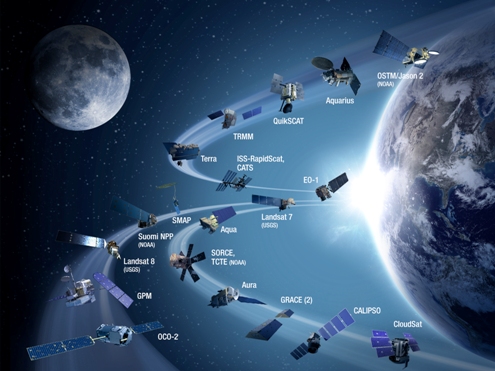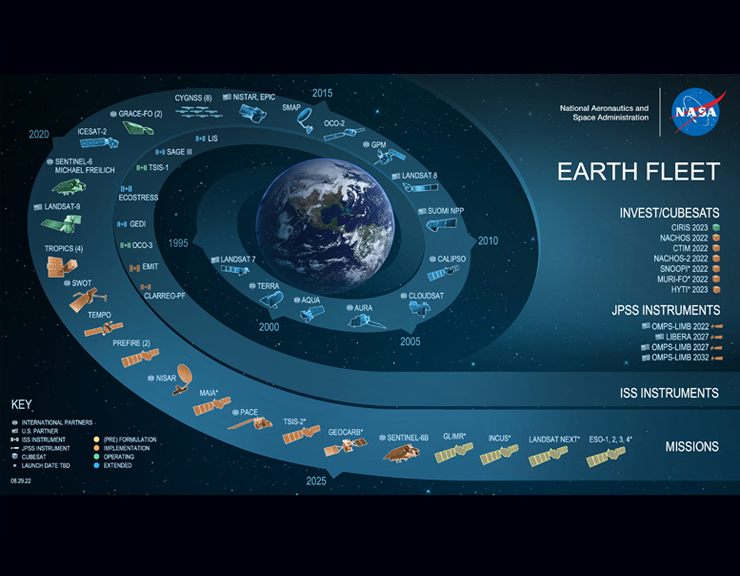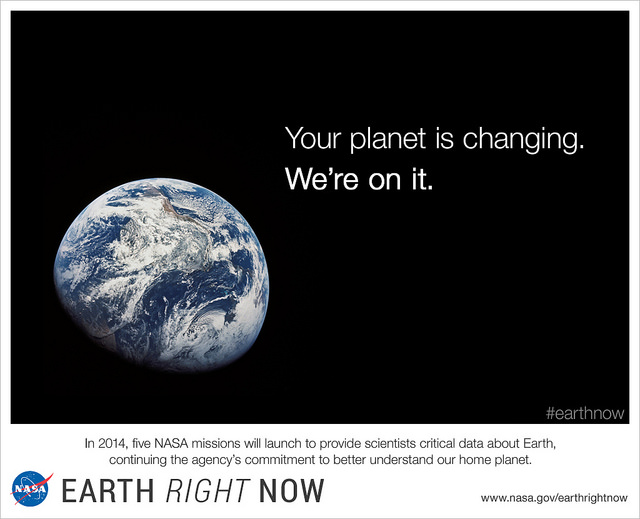File:Earth System Observatory.jpg: Difference between revisions
Siterunner (talk | contribs) No edit summary |
Siterunner (talk | contribs) No edit summary |
||
| Line 29: | Line 29: | ||
::[[Earth Science Vital Signs]] | ::[[Earth Science Vital Signs]] | ||
[[File:Earth Observing System - fleet of satellites.png]] | |||
Revision as of 13:45, 10 October 2022
Earth System Observatory
Carrying on the Mission Legacy
George E. Brown Jr U.S. Congressional space, science & technology leadership
Beginning in the 1960s and 1970s, the Mission begins -- Earth Science Research from Space
A tip of our GreenPolicy360 hat to the visionaries who first inspired the Earth Science programs
🌎
🌎
New 'Earth System Observatory' Announced
Expanding on NASA's original mission statement and decades of earth science programs
Measuring and monitoring the vital signs of the home planet
The agency is expanding its mission to tackle climate change. The plan is to launch five satellites over the next eight years that will enable the observatory to analyze everything from aerosols in the atmosphere to the rise of sea levels.
“All of this data over the next 10 years, when these five observatories are put up, is going to give us a picture of our planet and our climate to understand the changes that are happening,” Nelson said.
○
“When you look out the window of a spacecraft, it really gives you a different perspective,” Nelson said in an interview.
NASA is now going to take a closer look at what’s happening here on Earth, by studying how the climate is changing.
It’s a mission that is personal for Nelson, a former U.S. Senator and astronaut who flew on the space shuttle Columbia 35 years ago.
“I was seeing how we were messing up our planet, and that made me much more sensitive — to want to be a good steward of our climate."
○
The White House announced the Earth System Observatory program in a fact sheet that outlined a broader program to monitor and address the impacts of climate change, including $1 billion in “pre-disaster mitigation resources” for communities provided by the Federal Emergency Management Agency.
“NASA’s Earth System Observatory will be a new architecture of advanced spaceborne Earth observation systems, providing the world with an unprecedented understanding of the critical interactions between Earth’s atmosphere, land, ocean, and ice processes,” the White House said of the new program. “These processes determine how the changing climate will play out at regional and local levels, on near and long-term time scales.”
NASA, in a separate statement, said the Earth System Observatory will be a set of missions addressing the “designated observables,” a set of key observations that scientists recommended the agency pursue in the Earth science decadal survey published in early 2018.
○
File history
Click on a date/time to view the file as it appeared at that time.
| Date/Time | Thumbnail | Dimensions | User | Comment | |
|---|---|---|---|---|---|
| current | 21:51, 2 June 2021 |  | 457 × 338 (47 KB) | Siterunner (talk | contribs) |
You cannot overwrite this file.
File usage
The following 24 pages use this file:
- Climate News Events Archive ... 1970 to Today
- Earth Right Now
- Earth Science Research from Space
- Earth Science Vital Signs
- Earth and Space, Politics
- GreenPolicy360 Archive Highlights 2021
- Green Stories of the Day
- Green Stories of the Day - GreenPolicy360 Archive
- OCO-2
- Planet Citizen Action
- Siterunner
- Steven Schmidt
- User talk:Siterunner
- Green Policy:About
- File:Earth Information Center - 2022 Graphic NASA.png
- File:Earth Information Center - NASA.png
- File:Earth Information Center from NASA.jpg
- File:Earth Observing System - fleet of satellites.png
- File:State of NASA - June 2, 2021 - by Bill Nelson.jpg
- File:The Original Mission Statement of NASA.png
- File:ThinBlueLayer - June 30 2014.jpg
- File:ThinBlueLayer - March 17 2018.jpg
- Category:About Us
- Category:NASA
- Anthropocene
- Atmospheric Science
- Citizen Science
- Climate Change
- Climate Policy
- Democratization of Space
- Earth360
- Earth Imaging
- Earth Observations
- Earth Science
- Eco-nomics
- Environmental Full-cost Accounting
- Environmental Laws
- Environmental Protection
- Environmental Security
- Environmental Security, National Security
- ESA
- Externalities
- Fossil Fuels
- Global Security
- Global Warming
- Green Graphics
- NASA
- NOAA
- Natural Resources
- New Definitions of National Security
- New Space
- Orbital Perspective
- Planet Citizen
- Planet Citizens
- Planet Scientist
- Planet Citizens, Planet Scientists
- Planetary Science
- Sea-Level Rise & Mitigation
- Space Science and Space Physics
- Strategic Demands
- ThinBlueLayer
- Threat Multiplier
- US Environmental Protection Agency
- Whole Earth




